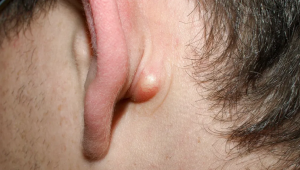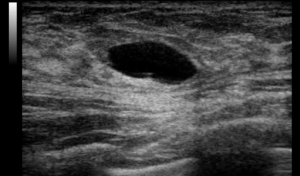What’s Causing This Cyst?
A cyst is a small pocket of tissue often filled with fluid or pus. It can occur due to an injury, infection, or other issues. They’re usually benign but may need treatment for complications.
Cysts can vary in appearance depending on their type and location. Here are 11 types of cysts.
Epidermoid cyst

Epidermoid cysts are small, benign bumps filled with keratin. Kertain is a protein that’s essential in forming your skin, hair, and nails. Epidermoid cysts occur when something blocks hair follicles, and skin cells build up beneath this blockage.
These cysts can look like a skin-colored, tan, or yellowish bump filled with thick material. They typically occur on your face, neck, or torso, but can occur across your body.
In rare cases, epidermoid cysts can be caused by an inherited condition called Gardner syndrome.
Sebaceous cyst

Sebaceous cysts are filled with sebum and are less common than epidermoid cysts. They often form within sebaceous glands, which are part of your skin and hair follicles. Sebaceous glands make oil for your skin and hair.
These cysts most commonly occur on your face, neck, or torso, and are often the result of damage to sebaceous glands.
Breast cyst

Benign cysts can develop when fluid collects near your breast glands. They can cause pain or tenderness in the affected area.
While breast cysts are noncancerous, there are many possible other more serious causes for a lump in your breast. It’s important to be familiar with how your breasts typically feel so you’re aware of changes. This way, you’re more likely to notice changes right away.
You should try to make an appointment to see a healthcare professional if:
- you discover a new lump
- an area of your breast is noticeably different than the rest
- a lump changes or grows larger
- you notice unexpected discharge from the nipple
- you have an inverted nipple, and it wasn’t always inverted

